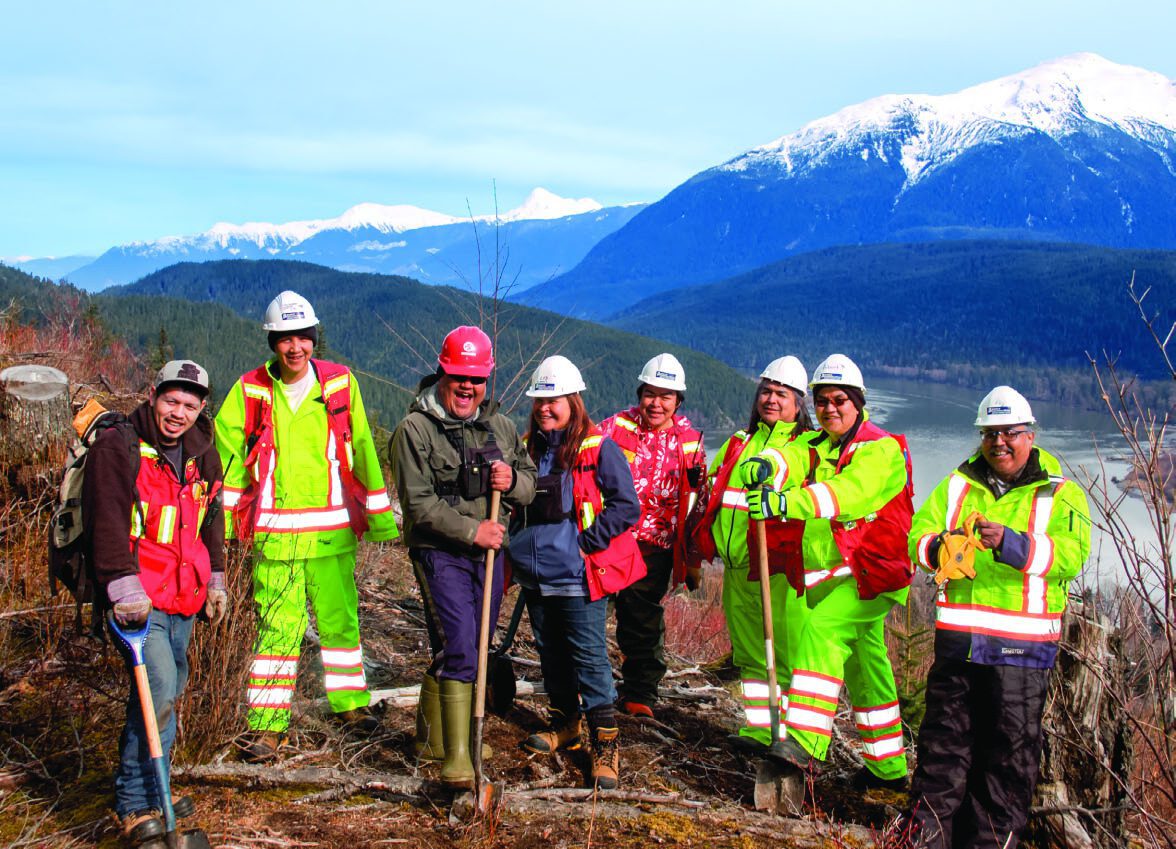Innovative collaboration is the future of British Columbia’s mineral exploration and mining industry, and a recent training venture between the Nisga’a Nation and the Northwest Community College School of Exploration & Mining (NWCC SEM) is leading by example.
In early 2014, the Wilp Wilxo’oskwhl Nisga’a Institute (WWNI) contacted NWCC to request an on-site version of the school’s Environmental Monitor Assistant Program (EMAP). NWCC had the program ready to be delivered, but there were logistical and financial challenges to be overcome if NWCC hoped to teach in the remote northwest corner of British Columbia.
Allie Glavina, industry education liaison for SEM, explains why the Nisga’a chose the program: “EMAP has a lot of really transferable skills. These students can work as field assistants [and] environmental monitoring assistants, in construction, mining, forestry. So the hope is that they take the views and the industry participation from this project and apply them to a variety of industries across B.C.” She adds, “It’s really important for our students to get some industry experience so that they have a realistic view of where they can take the training that they receive here, and how their training fits into the industry processes that drive much of the economy across British Columbia.”

So, over the next several months, SEM and WWNI reached out to everyone involved in the area and asked them to play a part. Proposals were written, meetings were held and grants were requested.
“We tried to meet with all levels of Village government and balance the different needs and desires of the numerous organizations,” says Danielle Smyth, projects administrator of SEM.
Funding came from the Nisga’a Employment, Skills & Training department and from Aboriginal Affairs and Northern Development Canada. In-kind support was provided by Alloycorp Mining Inc., owners of the Avanti Kitsault Mine that sits on Nisga’a territory. WWNI provided teaching space and on-site support, and the Village government sponsored incidentals for local students. The timeline was tight, and the funding was delayed, but on February 3, 2015, eight keen students from the Nisga’a Nation started the six-week, 330-hour training program. In less than a year, five different groups had worked together to request, develop and deliver the remote, community-based, industry-ready training.

The majority of the program was delivered in the Nisga’a village of Gitwinksihlkw. Alloycorp hosted a two-day field trip to the Avanti Kitsault Mine, funding meals and accommodations. Students were given access to the mine and surrounding sites, and allowed to participate in active fieldwork with engineering firm Knight Piésold. Students met and were mentored by members of the Nisga’a Nation who were already employed at the mine, giving them valuable exposure to potential career opportunities and providing cultural context.
“Students graduate with a network of industry contacts to help [in] their transition to employment [and to] act as mentors, and they also gain a realistic window into potential career opportunities,” says Smyth.
Why should the fact that eight students attended the EMAP training resonate with the mineral exploration and mining industry? Innovation and collaboration are key to the future of mineral exploration and mining, and this program in the Nass Valley is an example of both in action. Industry-ready training is important, but so are sitting down at the same table, discussing ideas, understanding what is important to each other, and sharing the toil and benefits of what is developed.
The benefits have been even more widespread than expected. These eight students were the first from SEM to participate in a NWCC convocation, and on June 1, 2015, they graduated in a ceremony with students from WWNI, NWCC and the University of Northern British Columbia.
It’s not often that an educational institute is able to create and deliver training within a timeline that is useful to industry, but NWCC SEM has repeatedly proven its strength in this area. It’s currently delivering the Mining Exploration & Natural Resources Field Assistant program in Kugaaruk, Nunavut, in partnership with the Inuit Association and the Canadian High Arctic Research Station.
“The model [was] created with previous contract training, and now the Nisga’a partnership showed us what is possible. Based on that success and the lessons learned, we can adapt that innovative model to various locations and industries,” says Smyth. “We are pushing boundaries, adapting to remote locations and overcoming the challenges [of] community-based deliveries.” Smyth admits that it’s a more challenging way of training but says it’s poised to provide long-term benefits to everyone involved in educational collaboration.
